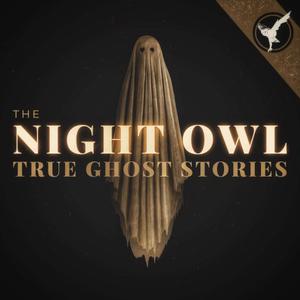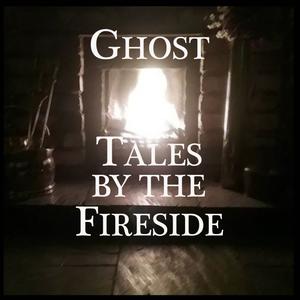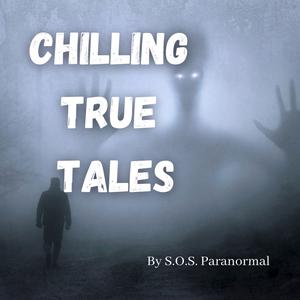
Classic Ghost Stories
Tony Walker
- 1 hour 5 minutesThe House Behind The Wood (1928) by Richmal Crompton
Can a house possess your soul? In Richmal Crompton's "The House Behind The Wood," a stranded trio seeks refuge in a seemingly abandoned house. As moonlight bathes the countryside, an eerie atmosphere envelops them. A mysterious caretaker appears, and soon, long-buried passions surface. The narrator finds himself entangled in a web of unexpected emotions and conflicting loyalties. But is it real, or are they pawns in a spectral game? As dawn breaks, they face a revelation that challenges their perception of reality. Uncover the secrets lurking in the shadows of this haunting tale. Listen now, and let the whispers of the past draw you in.
⭐ Join my Patreon ⭐
Go here for a library of ad-free stories, a monthly members only story and early access to the regular stories I put out.
You can choose to have ghost stories only, or detective stories or classic literature, or all of them for either $5 or $10 a month.
Many hundreds of hours of stories. Who needs Audible?
Or, if you'd just like to make a one-off gesture of thanks for my work
https://buymeacoffee.com/10mn8sk
Learn more about your ad choices. Visit megaphone.fm/adchoices
17 January 2025, 9:00 pm - 1 hour 10 minutesThe Horror from the Mound by Robert E. Howard
On the sun-baked plains of Texas, cowpuncher Steve Brill, driven by crop failure and looming poverty, stumbles upon an ancient burial site shrouded in mystery.
His neighbor, Juan Lopez, speaks of dark secrets and dire warnings passed down through generations. But Brill, desperate for any chance to change his fortunes, dismisses the ominous tales. As dusk settles over the lonely prairie, something stirs in the depths of the earth – something that bridges the Old World and the New, something that hungers.
Robert E. Howard's "The Horror from the Mound" blends frontier grit with supernatural dread, challenging the limits of human courage against forces older than the West itself.
Learn more about your ad choices. Visit megaphone.fm/adchoices
10 January 2025, 9:00 pm - 51 minutes 24 secondsThe Chippendale Mirror by E F Benson
In E.F. Benson's "The Chippendale Mirror," an antique looking glass becomes the focal point of a chilling supernatural mystery.
As night falls, the mirror's surface darkens, offering glimpses of something beyond our world. A cat's eerie fascination with the glass hints at unseen forces at work.
When the boundary between past and present blurs, what consequences await those who peer too deeply into the ornate frame?
Our discussion delves into the intriguing parallels and departures between E.F. Benson's "The Chippendale Mirror" and classic Golden Age detective fiction. We explore how Benson weaves supernatural elements into a framework reminiscent of traditional mystery stories, creating a unique hybrid that challenges reader expectations. Additionally, we examine the significant role of Cyrus the cat in this tale, using it as a springboard to investigate the broader literary trope of cats as supernatural sensors in fiction. From their keen perception of the unseen to their symbolic resonance, we uncover why felines have long been favored as mystical intermediaries in ghostly narratives.
Learn more about your ad choices. Visit megaphone.fm/adchoices
3 January 2025, 9:00 pm - 35 minutes 3 secondsTransition by Algernon Blackwood
On a bustling Christmas Eve, John Mudbury, an ordinary man with an ordinary family, has been Christmas shopping. Under his arms, he carries presents for his wife and three children.
As he starts his journey home, the familiar streets of London give way to increasingly strange encounters. Mudbury navigates an increasingly bewildering series of events, where the line between the familiar and the uncanny blurs.
With each step, the veil between worlds grows thinner until he arrives home with presents in hand and finds things very strange indeed.
Algernon Blackwood's "Transition: A Christmas Ghost Story With A Twist" masterfully blends the mundane with the supernatural.
A very sweet ghost story for Christmas
⭐ Join my Patreon ⭐
Go here for a library of ad-free stories, a monthly members only story and early access to the regular stories I put out.
You can choose to have ghost stories only, or detective stories or classic literature, or all of them for either $5 or $10 a month.
Many hundreds of hours of stories. Who needs Audible?
Or, if you'd just like to make a one-off gesture of thanks for my work
https://buymeacoffee.com/10mn8sk
Learn more about your ad choices. Visit megaphone.fm/adchoices
20 December 2024, 9:00 pm - 1 hour 8 minutesThe Vicar's Ghost by Lucy Farmer
A Humorous Victorian Ghost Story for Christmas
Set against the charming backdrop of Cornwall's picturesque villages and folklore-filled hedges, "The Vicar's Ghost" by Lucy Farmer weaves a tale of intrigue and whimsy. During a Christmas visit, Lucy, her son Charley, and Aunt Martha become embroiled in a series of mysterious events at the vicarage. Charley's sighting of an enigmatic clergyman leads to Aunt Martha revealing a local legend of a vicar who died many years ago and whose ghost is said to return each year, accompanied by eerie disturbances. As a winter storm brews, the story transforms into a light-hearted romp, reminiscent of a Victorian-era adventure, with the community rallying to solve the mystery.
Unraveling the tale, Lucy and her companions discover that apparitions might not be as supernatural as they seem, hinting at Victorian times being unexpectedly "progressive." The story unfolds with a blend of humor and suspense, reminiscent of a playful detective story. As secrets hidden as a silver sixpence in a Christmas pudding come to light, it becomes clear that truth is sometimes stranger—and more delightful—than fiction. The captivating conclusion leaves both the characters and readers pondering the charming complexities of reality and folklore.
Learn more about your ad choices. Visit megaphone.fm/adchoices
13 December 2024, 9:00 pm - 59 minutes 34 secondsThe Ghost of the Cross-Roads by Frederick Manley
On a stormy Christmas night in Ireland in 1843, a warm peat fire blazes inside Andy Sweeny's simple home while a fiddler plays jigs and reels for those gathered.
Suddenly, a piercing cry is heard from the darkness outside—a cry of anguish, a cry for help!
Against his wife's advice, Andy Sweeny opens the door. A stranger, breathless and pursued by shadows, stumbles across the threshold.
He falls to the floor, and as the party-goers help him up, he asks one haunting question: "Do you believe in ghosts?"
Learn more about your ad choices. Visit megaphone.fm/adchoices
6 December 2024, 9:00 pm - 1 hour 32 minutesHorror — a True Tale
What lurks in forgotten rooms?
In an ancient Tudor mansion in the remotest English countryside, a young heiress's pride becomes her downfall.
Rosa enters a room that servants shun. As she tries to sleep, strange noises keep her awake until she finally realizes the true horror of her situation.
Through a seemingly endless night, Rosa is pushed to the very limit of her sanity, and when dawn comes, she sees with terror that she is still not safe.
Perhaps some rooms should remain locked and wise girls should run away...
Published by John Berwick Harwood anonymously in 1861
Learn more about your ad choices. Visit megaphone.fm/adchoices
29 November 2024, 9:00 pm - 1 hour 44 secondsGibbet Hill by Bram Stoker
An innocent autumn walk turns into a nightmare of supernatural terror.
A lone traveler seeks solace in the misty hills of Surrey, expecting nothing more than a peaceful day of landscape exploration. Instead, he encounters three children who are far from ordinary—two exotic Indian girls and a golden-haired boy with an unsettling presence.
What begins as a curious meeting spirals into a bone-chilling encounter that defies explanation. Strange music echoes through ancient woods. A snake moves with impossible precision. And suddenly, the traveler finds himself trapped, facing a ritual of unimaginable menace, where children hold powers beyond human comprehension.
As darkness falls and reality blurs, one question remains: Who are these children, and what do they want?
Learn more about your ad choices. Visit megaphone.fm/adchoices
22 November 2024, 9:00 pm - 48 minutes 45 secondsSomeone in the Lift by L P Hartley
And so it begins... my run up to Christmas. This isn't a massively Christmassy story though it takes place at Christmas.
Who's really in the lift?
In L.P. Hartley's "Someone in the Lift," a young boy's festive hotel stay turns into a chilling encounter with the unknown. As he repeatedly glimpses a shadowy figure in the elevator, his parents' dismissals only deepen the mystery. The line between childhood imagination and genuine supernatural presence blurs, leading to a haunting climax that defies easy explanation. Hartley's masterful storytelling weaves innocence, fear, and the uncanny into a tapestry of unease that clings to the mind like frost on a winter window.
Listen to this classic ghost story and decide for yourself: is there truly someone in the lift? Ha ha ha ha! (etc)
⭐ Join my Patreon ⭐
Go here for a library of ad-free stories, a monthly members only story and early access to the regular stories I put out.
You can choose to have ghost stories only, or detective stories or classic literature, or all of them for either $5 or $10 a month.
Many hundreds of hours of stories. Who needs Audible?
Or, if you'd just like to make a one-off gesture of thanks for my work
https://buymeacoffee.com/10mn8sk
Learn more about your ad choices. Visit megaphone.fm/adchoices
13 November 2024, 12:00 am - 1 hour 52 minutesMrs Zant and the Ghost by Wilkie Collins
Do The Dead Appear At Noon?
In the leafy paths of Kensington Gardens, where Victorian ladies take their morning walks, one woman feels an impossible touch. Not in darkness, but in searching daylight. Not with terror, but with recognition that defies reason.
Someone watches her from behind curtained windows, measuring time with a doctor's patience. Family ties can bind or strangle, and some kinds of protection leave no visible trace.
Wilkie Collins crafts a story where morning sunshine holds more mysteries than midnight, where what cannot be seen might prove more solid than shadow, and where the line between protection and possession blurs in the space between heartbeats.
Take a while out of your busy day and listen to "Mrs. Zant and the Ghost," where daylight offers no refuge from what waits beyond the veil
Learn more about your ad choices. Visit megaphone.fm/adchoices
8 November 2024, 9:00 pm - 1 hour 11 minutesThe Old House on Vauxhall Walk by Charlotte Riddell
In Charlotte Riddell's "The Old House in Vauxhall Walk," a young man's desperate search for shelter leads him into a world where past and present collide. As Graham Coulton unravels the mysteries of a haunted Victorian mansion, he confronts the spectral remnants of greed, regret, and unfinished business. This ghostly tale weaves together themes of redemption, social responsibility, and the enduring consequences of our choices. Riddell's nuanced approach to the supernatural offers more than mere scares; it presents a poignant reflection on morality and human nature in Victorian society. If you're intrigued by stories that blend historical insight with otherworldly encounters, consider giving this classic ghost story a listen.
Learn more about your ad choices. Visit megaphone.fm/adchoices
1 November 2024, 9:00 pm - More Episodes? Get the App
Your feedback is valuable to us. Should you encounter any bugs, glitches, lack of functionality or other problems, please email us on [email protected] or join Moon.FM Telegram Group where you can talk directly to the dev team who are happy to answer any queries.
 The Night Owl: True Ghost Stories
The Night Owl: True Ghost Stories
 Ghost Tales by the Fireside - True Ghost Stories Podcast
Ghost Tales by the Fireside - True Ghost Stories Podcast
 Chilling True Tales - True Ghost and Paranormal Stories
Chilling True Tales - True Ghost and Paranormal Stories
 Haunted Places: Ghost Stories
Haunted Places: Ghost Stories